Hypersonic weapons can take missile warfare, particularly nuclear warfare, to a new – and, for many, frightening – level. They can travel much faster than current nuclear-capable ballistic and cruise missiles at low altitudes, can switch direction in flight and do not follow a predictable arc like conventional missiles, making them much harder to track and intercept. Even as conventionally armed, non-nuclear weapons, they are viewed by analysts as raising the danger of conflict, because an adversary might not know how they are armed when launched.
The U.S. has its own plans to roll out hypersonic weapons. The technology is nearly at the point of development of rocket-boosted hypersonic glide vehicles. The next evolution will be producing air-breathing hypersonic vehicles, which can carry a heavier payload.
The science and research is being done collaboratively by the US Missile Defence Agency (MDA), Space Development Agency (SDA) and the Defense Advanced Research Projects Agency (DARPA).
Key to hypersonic weapons will be the development of thermal protection systems that protect the vehicles when they enter the earth’s atmosphere from space at high speed and heat up.
Russia and China are currently producing these. The Chinese hypersonic threat is severe and increasing. They outrun and outrange the US’s best radars.
A problem is tracking these weapons. The target acquisition, tracking and fire-control problem solution will have to come from the space domain. Sensors will have to be put into space to track these very dim targets against the clutter of earth background.
Japan Unveils Plans for Hypersonic Weapons
The Japanese blueprint reportedly stipulates the development of the Hypersonic Cruise Missile (HCM) and the Hyper Velocity Gliding Projectile (HVGP) which are expected to enter service in the early 2030s.
The Japanese government has unveiled its research and development road map to create domestically-produced hypersonic weapons. Under the plan, there will be two classes of hypersonic weapon systems, including the Hypersonic Cruise Missile (HCM) and the Hyper Velocity Gliding Projectile (HVGP). Powered by a scramjet engine, the HCM appears similar to a typical missile, albeit one that cruises at a much higher speed while capable of traveling at long ranges. The HVGP, it will reportedly feature a solid-fuel rocket engine capable of boosting its warhead payload and maintaining high velocity when gliding to its target. The blueprint stipulates using different warheads to tackle seaborne and ground targets, including one that will be specifically designed to penetrate the deck of an aircraft carrier.
The warhead’s land-attack version, in turn, will feature a high-density explosively formed projectile, or EFP, to be used for area suppression purposes. Both warheads, which will be navigated via satellites, are expected to enter service in the early 2030s.
As far as warhead guidance is concerned, the process will be achieved via either radio-frequency imaging converted from Doppler shift data – which the government agency said will be able to identify stealthy naval targets in all weather conditions – or an infrared seeker capable to discriminating specific targets.
Unarmed Hypersonic Missile Tested
The United States announced, on 20 March, that it has successfully tested an unarmed prototype of a hypersonic missile, a nuclear-capable weapon that could accelerate the arms race between superpowers. The Pentagon said a test glide vehicle flew at hypersonic speeds – more than five times the speed of sound, or Mach 5 – to a designated impact point. The joint Army-Navy test was carried out on March 19 from the Pacific Missile Range facility in Kauai, Hawaii. The test was for the military’s common-hypersonic glide body, or C-HGB weapon, designed to be launched from a rocket that could be land-, air- or sea-based.
The test followed the first joint US Army and Navy flight experiment in October 2017, when the prototype missile demonstrated it could glide in the direction of a target at hypersonic speed.
The Pentagon is pressing to catch up with rivals Moscow and Beijing in the race to develop hypersonics, even as it recognizes they could dangerously raise the risks of a nuclear conflict, as countries struggle to build defenses against them.
In its fiscal 2021 budget the US Defense Department requested $3.2 billion for hypersonic programmes, up from $2.6 billion in 2020. The goal is a deployable hypersonic capability by 2023, though that could be difficult.
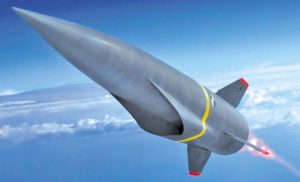

Russia and China
In December 2019, Russia declared it had placed into service its first Avangard hypersonic missile, making it the first country to claim an operable hypersonic weapon. Russian officials claimed that in tests it had reached speeds of up to Mach 27, roughly 33,000 kilometers per hour.
China is also investing significantly in their development. Last October it displayed its DF-17 hypersonic glide vehicle in its national day military parade. The US military is meanwhile pouring money into advanced missile defense research to find ways to protect against hypersonics.
Layered Missile Defense
The MDA, in cooperative work with Israel and Japan, is planning to build next-generation interceptor and space-based sensors to track fast moving and fast maneuvering threats such as hypersonic weapons.
A system called Command and Control Battle Management Communications is being built that will allow operators to pass control or tracking information between various ballistic missile systems, such as Terminal High Altitude Area Defense (THAAD), Patriot, Standard Missile-6 and Aegis.
Sm3 Block 1B missiles are in production now. These are designed for midcourse engagement from ships and Aegis ashore sites. The SM3 Block 2A, going into production now will be tested later in 2020 against an intercontinental ballistic missile target. Upgraded early warning radars are being built in Alaska. The department is also seeking to produce a more capable THAAD design.


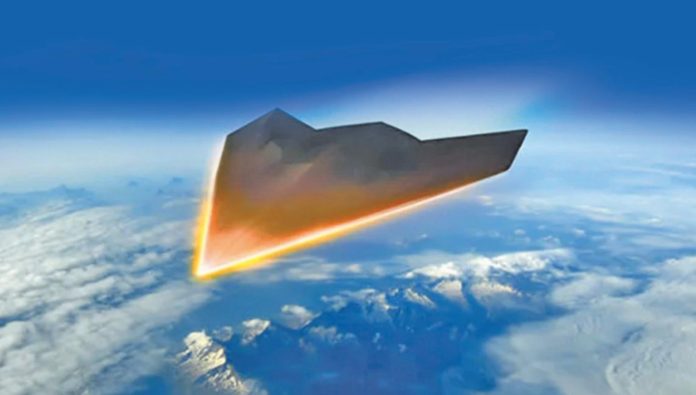


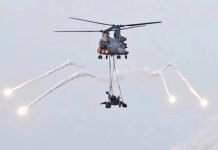
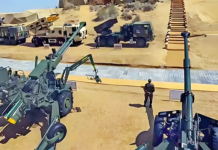
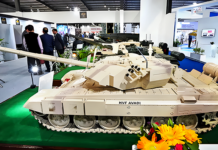










[…] ALSO READ FUTURE TECHNOLOGIES : Hypersonic Weapons – The New Arms Race […]